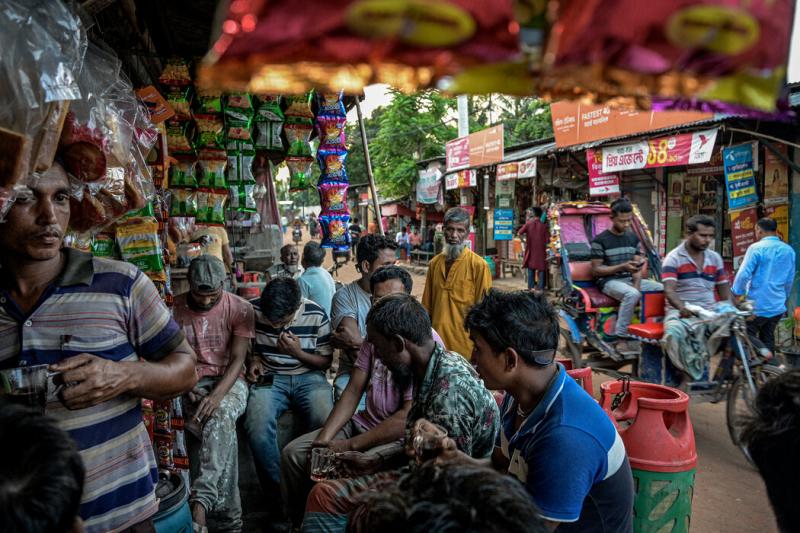
For more than half a century, developing countries have not changed much about the development of developing rich: transferred self -sufficient farmers to manufacturing, and then sold their products to other places in the world.
This method is customized in Hong Kong, Singapore, South Korea, Taiwan, and China in different local methods, producing the most powerful economic growth engines in the world in the world, helping hundreds of millions of people get rid of poverty and created employment.Opportunities have improved living standards.
The success of the four Asian dragons and China depends on the combination of a large number of cheap labor, international technology and financing channels, as well as buyers from Karama to Kuala Lumpur.The government provides support: build roads and schools, provide rules and incentive measures that are conducive to business, establish capable administrative institutions, and cultivate emerging industries.
But technology is progressing, the supply chain is moving, and the situation of political tensions is reshaping the trade model.As a result, people are increasingly doubting whether industrialization can still bring a miracle of growth.For developing countries with a total population of 6.8 billion and 85%of the global population, its impact is far -reaching.
Today, manufacturing has a smaller share of global output than before, and China's manufacturing industry has accounted for more than one -third of the world.At the same time, more and more emerging countries sell cheap products to overseas overseas, which has exacerbated the competition in the manufacturing industry. There are not so many oil and water squeezing: not every country can become a net exporter or provide the lowest salary in the world.And operating expenses.

People doubt whether industrialization can create the previous benefit, so as to completely change the situation.Today's factories often rely on automation technology, not cheap workers without training.
"You can't create enough employment opportunities for most of the lowly educated workers," said Danny Rodrik, a well -known development economist at Harvard University.
This process can be seen in Bangladesh that the senior executive of the World Bank said last year that the country was "one of the greatest development stories in the world".The country succeeded by turning farmers into textile workers.
However, last year, Lupana Hak, Chairman of the Family Enterprise Group Mohamadi Group, replaced 3,000 workers with an automation jet machine to make complex textile patterns.
The replaced female workers found a similar job in other company departments."But what happened when this situation occurs on a large scale?" Harker, who was also the Chairman of the Bangladesh clothing manufacturer and the chairman of the exporter association.
These workers have not been trained, she said."They cannot become programmers overnight."
The recent development of global affairs has accelerated this change.

The supply chain is popular due to the popularity of the new crown virus and the influence of sanctions caused by Russia's invasion of Ukraine. It has collapsed, which has led to an increase in the price of essentials such as food and fuel, which has brought adverse effects on income.The central banks of various countries increased interest rates to suppress inflation, which caused another bunch of crisis: the surge in debt in developing countries and the depletion of capital for investment.
Last week, the International Monetary Fund warned the harmful combination of slowing growth and rising debt.
The rapid development of globalization encourages enterprises to purchase and sell around the world, but this trend is also changing.The growing political tensions, especially the tensions between the United States and China, are affecting the investment and trade locations of enterprises and the government.
Enterprises hope that the supply chain is safe and cheap, and they are looking for suppliers in neighboring countries or political allies.
Rodrik said that in this new era, "the industrialization model that almost every rich country has rely on can no longer bring fast and sustainable economic growth."
I don't know what it can replace it.

The service industry is very promising.
Bangalore is a high -tech center in Kanatakn, India, which may bring another choice here.
Goldman Sachs, Victoria's Secret, Economist Magazine and other multinational companies have poured into the city, setting up hundreds of operating centers -known as the Global Capability Center -handling accounting affairs, product design, and networksSafety system research and development, as well as artificial intelligence and other work.
According to the consulting company Deloitte, these centers are expected to provide 500,000 jobs in India in the next two to three years.
These centers are joining the ranks of hundreds of biotechnology, engineering, and information technology companies, including local giants Tata consulting services, WIPRO and Indiaces Co., Ltd..Four months ago, the American chip company AMD opened its largest design center in the world here.
"We must change the concept of the classic development stage, that is, from farm to factories, and then from factories to office," said Richard Baldwin, an economist at the Institute of International Management and Development, headquarters in Lausanne, Switzerland."That whole set of development model is wrong."
At present, two -thirds of the world's output come from the service industry.This is an all -inclusive industry. Practitioners include dog walkingrs, nail artists, food preparators, cleaners and drivers, as well as chip designers, graphic designers, nurses, engineers and accountants.
Baldwin believes that it may directly cross the service industry and achieve growth by providing services to companies around the world.This is the way India has become the fifth largest economy in the world.
Baldwin explained that in Bangalol, the general improvement of middle -class living standards has attracted more people and more enterprises to go, and correspondingly attracts more people and enterprises to form a cycle.
The new crown epidemic is forced to work in different regions, cities or different countries in different regions, cities or different countries in the city, thereby accelerating this transformation.
Under this new model, countries can focus on the cities, rather than in a specific industry."This will create quite diverse economic activities," Baldwin said.
"Consider Bancartor, not southern China," he said.
It is not enough to rely on the free market.
Many developing countries still focus on the construction and export -oriented industry, and use it as the road to prosperity.This is the road to Must, Lin Yifu, dean of the New Structural Economics Research Institute of Peking University.
He said that a wrong belief promoted the pessimistic view of the classic development model, that is, it is believed that the growth process is automatic: as long as the road is cleared for the free market, the rest of the matter will be achieved.
All countries are often under pressure from the United States and international institutions, asking them to accept open markets and let go of governance.
The export -oriented economic growth model of Africa and Latin America has fallen. It is because the government has failed to protect and subsidize emerging industries. Lin Yifu, who was the chief economist of the World Bank.
"Industrial policy has been taboos for a long time," he said, many attemptors failed.But there are successful examples such as China and South Korea.
"The country needs to help the private sector to overcome the problem of market failure," he said."This can not be done without industrial policies."

There is no education.
The most important question is whether the service industry and the manufacturing industry can bring the kind of widely, large scale, and sustainable growth that can bring global urgent need?
Although the jobs that provide services to enterprises are growing, many jobs that provide high -income income are in the fields of finance and technology. These areas often need advanced skills, as well as the population of population in most developing countries.Education level.
According to the data of Wheebox, the education test service agency, nearly half of India's university graduates do not have the skills required for these jobs.
Education and job posts are not matched everywhere.The Future Report released by the World Economic Forum last year found that 60%of workers will need to receive re -training in the next three years, but the vast majority of people do not receive opportunities for re -training.
Other types of service jobs are also surging, but many positions have not paid high and cannot be exported.Bangalore's hairdresser could not make a haircut to the people living in Brooklyn.
This may mean a smaller and uneven economic growth.
Researchers at Yale University have found that in several countries in India and Southara, people engaged in agriculture have improved their own productivity and income after crossing the consumer service industry.
But there is a hidden problem in it: the distribution of income is "extremely unequal", and the rich people are not properly benefited.
With the slowdown of global economic growth, developing countries will need to obtain all possible growth from all aspects of the country's economy.Harvard's Rodrik said that although industrial policy is crucial, the focus of the policy should be placed in smaller service companies and families because they will be the source of most future economic growth.
He and others warn that even so, growth may be limited and it is not easy.
"The scope of economic growth has narrowed," he said."No matter how much we can get, there must be less than in the past."



